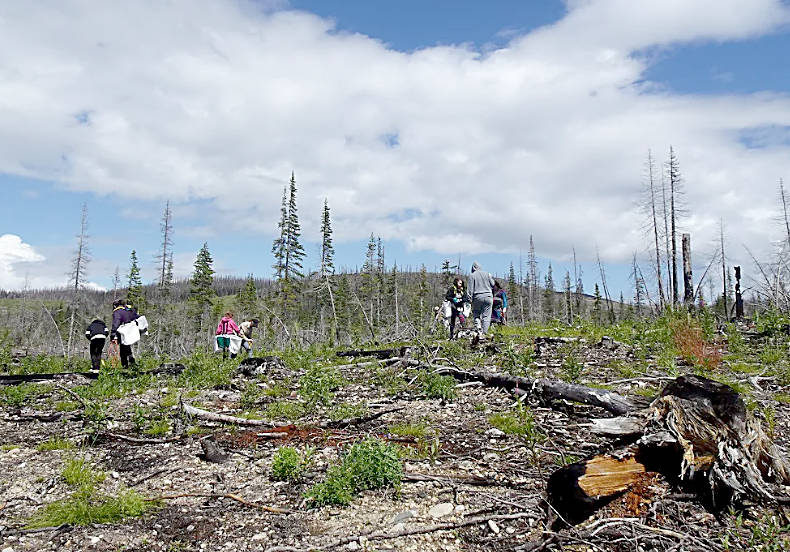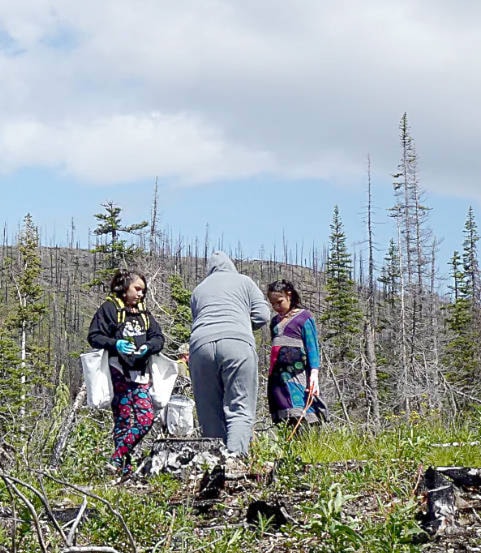The Cheslatta Carrier Nation (CCN) had their first tree planting session of a four year tree planting plan Tuesday. It’s part of a new contract CCN just received from the Federal government, under the Species at Risk program—an initiative to prevent wildlife species from becoming extinct through various ways of managing and recovering it.
The chosen area for CCN and DWB is around Tweedsmuir Park, says Melissa Steidle, RPF project manager for DWB Consulting Ltd., who has been hired by CCN.
Four students from CCN’s summer school program, along with their parents, Steidle and her children, Sean Neufeld, Steidle’s DWB coworker, Bulkley Valley Research Centre researcher, Alana Clason, and a Canfor representative and her young daughter, got together and planted 724 whitebark pine seedlings in total.
“CCN is very proactive environmentally and they’re a fun group of people to work with,” said Steidle.
Chief Corrina Leween said, “Cheslatta Carrier Nation has always been involved in environmental stewardship. We continue to support projects like this that help repair our environment and hope our participation will be a reflection in our global foot print for generations to come.”
Whitebark pine is dubbed a species at risk, and in need of replenishing in B.C., she said. The reason is because of a rust that was accidentally introduced in the early 1900s, that basically attacks and kills the trees. It came over from Europe, and while there appear to be a lot of trees still left, they are declining in number.
“There’s a reason why customs makes you get rid of the apples that you bring in from a different country and that sort of thing,” said Steidle, pointing to a major lesson in this.
“So those are rules that should actually be taken seriously… Even seeds you’re not supposed to bring across unless they are verified that they can be brought into Canada. That’s to reduce the risk of introduced disease,” she said.
CCN is funding 50 per cent of the cost for the first two years, while the Federal government funds the other 50 per cent of the costs. The following two years, CCN will fund all the costs, according to Steidle.
Whitebark pine is what is known as a keystone species, which is the reason it is so important. Like elephants, beavers, and humans, the whitebark pine creates habitats for other creatures throughout its life course.
“So, we change our habitat to live, which allows other species to also live there,” said Steidle.
The fascinating thing about the whole scheme with the whitebark pine, is that it may all hinge on one small bird… The Clark’s nutcracker.
“It’s the same family as the crow. They pull the cones apart, and then they hide all the seeds. And they’ll hide thousands of seeds, and they remember where they are, but ultimately, they don’t get them all. And that seed will germinate. So, the tree requires the Clark’s nutcracker in order to establish a site,” said Steidle.
If the bird doesn’t pull through, CCN and DWB, along with Bulkley Valley Research Centre, may have to look at trying to do this part themselves, she said.
“So the tree has evolved very specifically, and has a very specific reproduction cycle… And the bird is around. We know it’s in Tweedmsuir Park,” she added.

